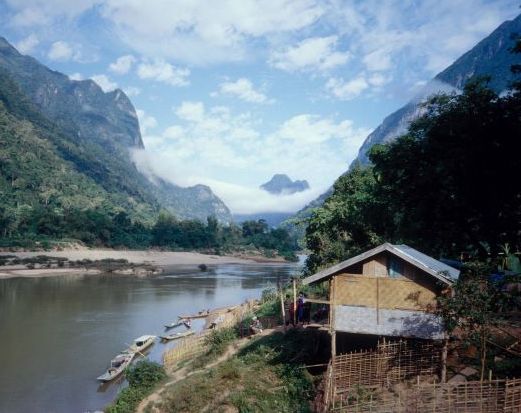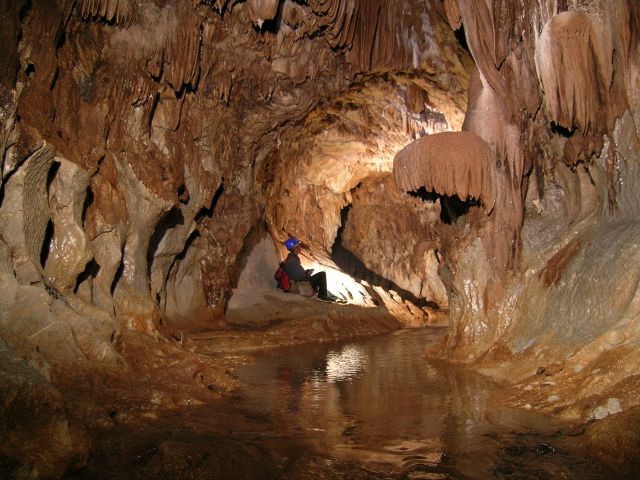



    |
Northern Lao - European |
|
Laos 2006 Expedition to Vieng Phouka Expedition time: 4.-16. February 2006 Pre-expedition of Joss to Phounsavan Area from 25.1.06
The expedition continued to
explore the Vieng Phouka district after the very successful expedition
in 2005 which revealed the longest caves of Northern Laos with the
Nam Eng system. The first two days focused on the ridge nearby Nam Eng
and three water caves were found with each about 400 m length. Sumps and
siphons marked the end s of the caves and diving is needed. The Tham Nam
Pob is suitable for tourism with nice waterfall cascades, active
dripstones and just nearby Tham Nam Eng. The connection of the Tham Nam Lot cave to three entrances on a higher level was the highlight of the expedition. This resulted in a nice three level system with in total 7 entrances allowing various underground crossing of the isolated mountain, large drip stone filled chambers. The system was pushed from 1.4 km to a total length of about 2.5 km. Also the bio-speleological collectors were happy with an abundance of insects and sceletons in the size from bats to complete rats. The size of passages are the biggest in Northern Laos with width of 20 m and ceilings heights about the same. The area was closely investigated, but no other longer systems found. Villagers give information about caves further away and longer hiking is needed. In total 4 days were spend in the so called Nam Mai area.
The survey of the huge
250 long, 100m wide and 100m high Tham Phoulan chamber is still undone.
One group of the expedition approached after an 2.5 h walk the mountain
with the 200 m higher cave entrance. Villagers were ready to renew the
rooten bamboo stairs along the steep mountain slope when suddenly one
villager mentioned a water cave on the foot of the mountain. The Tham
Kout (porcupine cave) with muddy squezzy passages was surveyed to a
length of 380 m. Conclusion: The Laos 2006 expedition surveyed 5 km of new cave passages resulting in total 14 km cave passages in the area. A better understanding of the potential for caves in the area was achieved by the intense visit of two areas around the known long caves and the new area Phou Lek. Three of the surveyed caves (Tham Nam Pob, Tham Pasat upper entrance, Tham Pui) are suitable for tourists and located close to the Nam Eng and Nam Lot caves that already used for ecotourism. Every village knows about cave entrances and there seems to be an abundance of caves. Few reliable information can be extracted about the distance to the cave and estimated length. This leaves the task of pushing further in the jungle with 2-3 hour hikes or to wait until more roads are build and areas are easier accessible. The support of the Ecotourism project and the European Union for the arrangement of permission, transport and guides is greatly acknowledged. Special thanks to Rob Murdock for his help. |